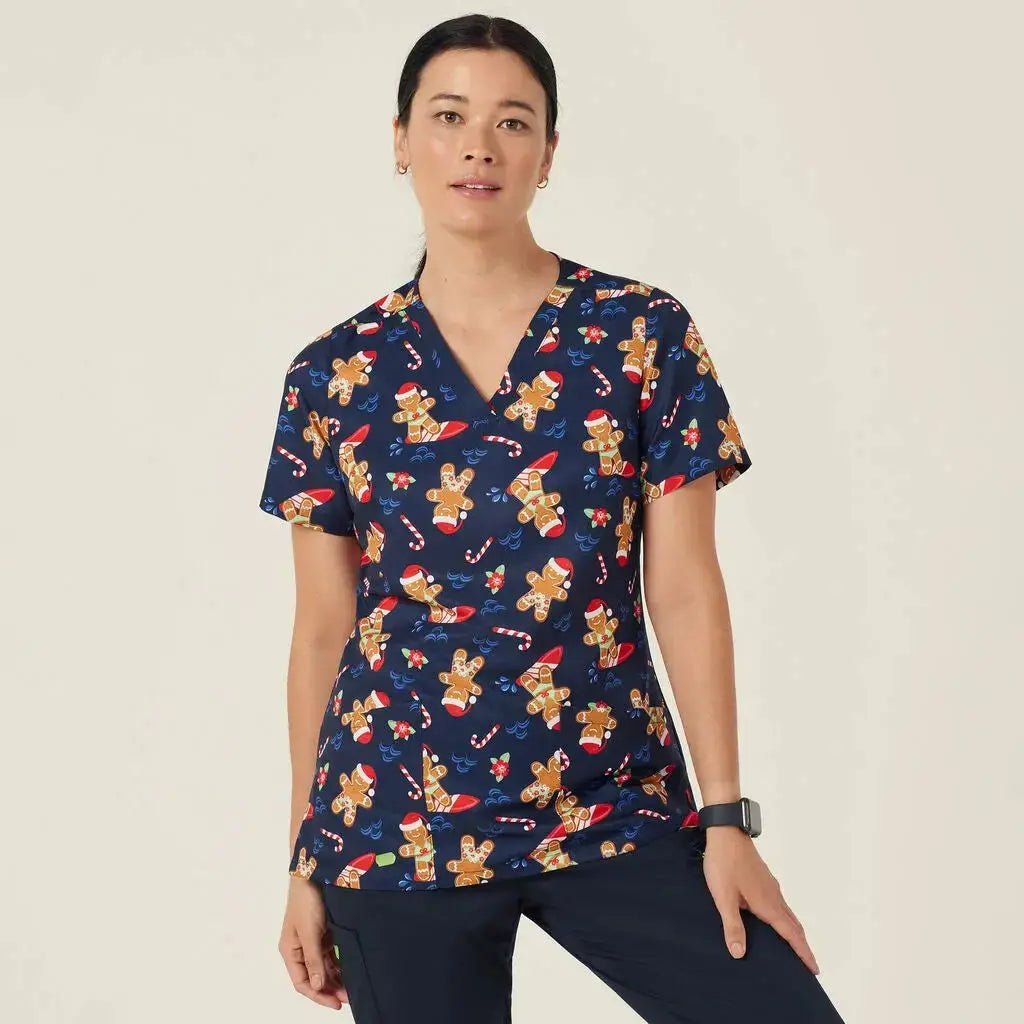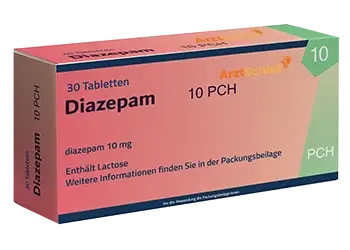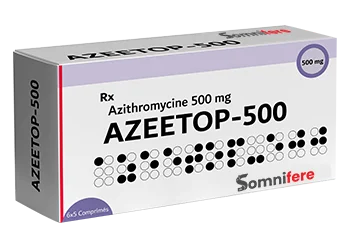Orthopaedic surgery helps to reduce pain and restore mobility, thus increasing the quality of life for the patient. It has been said that life is movement, movement is life. The musculoskeletal system facilitates movement. Any condition affecting the movement of a part, or all, of the musculoskeletal system has the potential for a reduction in the quality of life. The goals for the patient are relief of pain and restoration of function through non-operative approaches or surgery. This branch of surgery would aim to delay or come to the aid of a condition with non-operative treatments. If the delay is to no avail or a condition is deemed unsuitable for non-operative management, operative intervention would be considered to correct a condition. This may be performed for many reasons ranging from pain relief to correction or prevention of a life-threatening condition. All surgical intervention carries potential benefits and risks. The nature of these will be discussed, also the natural history and prognosis of an untreated or treated condition.
Orthopaedic surgery represents the tool with which a vast array of bone and joint conditions are treated with surgical intervention. This is a branch of surgery specializing in conditions involving the musculoskeletal system. The surgical techniques are used to investigate and treat traumatic, congenital, degenerative, and inflammatory disorders of the bones, joints, and associated soft tissues including ligaments and muscles.
The role of orthopaedic doctors
Orthopaedic doctors are predominantly concerned with the musculoskeletal system in the human body. Muscles, ligaments, and joints all come under the realm of the orthopaedic doctor. The role of the orthopaedist is changing with advances in diagnosis and treatment of conditions, predominantly the increase in arthroscopic surgery. This system involves the use of cameras and equipment to perform surgery usually without the need for a large incision. Although the method of repair is sound, the weaknesses lie in the diagnosis and the ability to perform the repair effectively. This is changing with the increased availability and ease of use of MRI and CT scanners. It is said that advancements in this technology and other areas mentioned will decrease the amount of trauma surgery (fixing broken bones, torn ligaments, etc.) and increase the amount of elective surgery in the elderly population. This is directed at prevention of loss of mobility in the later years of life, the general idea being that if something is fixed before the age of 60, there is no chance of it becoming a problem. Prices of surgery will also decrease with the less invasive methods, therefore being a viable option for a wider population. This, however, is detrimental to surgeons who specialize in the older methods and trauma surgery. The increase in technology and the broadness of the field may push for sub-specialization in a particular area, such as foot and ankle, spine, total joint preservation/replacement, and pediatrics are a few examples. Sub-specialization, however, may not be the best option for the extremities of the medical system.
Importance of seeking orthopaedic care in Singapore
It is essential for patients to seek early consultation and treatment. Without proper care, some orthopaedic conditions may lead to chronic, long-term pain and disability. That will make correction at a later time more difficult with poorer outcomes. It is important to know that orthopaedic surgical care is a cost-effective treatment for many conditions. For example, a recent study of patients with employer-sponsored insurance showed that the average orthopaedic patient spent less than 2% of his or her income on surgical treatment of a musculoskeletal condition. On average, the patient experienced nearly an 85% reduction in the work days lost due to a musculoskeletal condition and a 78% reduction in activity limitations. This led to an average annual increase of 25% of the patient’s income level. With improved outcomes, the patient not only becomes more productive but he or she also contributes to society in a positive manner. This ultimately benefits the nation economically and socially. Failure to address and provide treatment for these conditions may lead to a greater number of people with activity limitations and with chronic conditions that could have been corrected.
Common Orthopaedic Conditions
Fractures are common, but the ability to recover strongly depends on the type of treatment provided. Some fractures may be stable enough to allow application of a cast that enables normal healing. Others will require surgical intervention to ensure that they heal in the correct position and do not cause further complications. Treatment aimed at knitting the bone back together is dependent on the type of fracture and the bone involved. In the case of a severe fracture, the bone may have to be reconnected through surgery using screws and plates. This is more common in older patients or those with poor bone quality. Alternatively, if a joint surface (where movement occurs) is involved in the fracture, then sometimes the joint surface needs to be replaced rather than attempting to fix a poor position. An example of this is a hip fracture in an elderly patient; in some cases, a joint replacement is the best option. Failing to replace a joint surface accurately can lead to post-traumatic arthritis and a poor quality of life. An x-ray is often required to determine the severity of a fracture. This enables the correct treatment to be offered the first time and reduces the risk of complications and later surgery.
Fractures and broken bones
A fracture is a broken bone that requires orthopaedic care. It is usually caused by an injury that the bone cannot support. Fractures are commonly caused by trauma, such as a fall or a car accident. There are several types of fractures: simple, compound, displaced, and comminuted. A simple fracture is when the bone is broken but the skin is not punctured. A compound fracture is when the skin is punctured by the bone. A displaced fracture is when the bone is broken and is no longer in its original position. A comminuted fracture is when the bone is broken into several pieces. Symptoms of a fracture include loss of function, deformity, bruising, swelling, and severe pain. Fractures are usually diagnosed by an x-ray and physical examination. The x-ray will show how severe the fracture is and what method of treatment is optimal. Simple stable fractures can usually be treated by applying a cast or a splint. Unstable fractures or fractures that have been displaced will usually require surgery. During surgery, the bone is repositioned and the unstable fragments are fixed in place. This can be done using intramedullary nails, plates, screws, or an external fixator. After the fracture has been stabilized, physical therapy is usually started to restore muscle strength and to regain full movement of the limb.
Arthritis and joint pain
Arthritis is a common disease that affects the joints in the body. It is often associated with older people, but it can affect anyone at any age. There are many different types of arthritis, but the most common type is osteoarthritis. Arthritis is due to a reduction in the normal amount of cartilage tissue through a natural process, although it can be accelerated by injury or trauma. It affects both the weight-bearing and non-weight-bearing joints and often is worse in the joints that have been injured and overused. The joint becomes stiff and painful, and it is difficult to move the affected joint, particularly after a period of rest. This is a recognizable feature of all types of arthritis. Erosion of the cartilage in the joints will lead to the two ends of the bone rubbing together.
Arthritis can be diagnosed via a clinical examination. The affected joints generally have a reduced range of movement with pain at the end of the movement of the joint. An X-ray of the affected joint may show a reduced joint space and osteophytes, which are bony outgrowths that form in the joint. Blood tests are sometimes performed to help diagnose the type of arthritis and the specific joints affected. An MRI or CT scan can also diagnose the soft tissue damage within the joint.
The aim of treatment for arthritis is to control and relieve pain, maintain mobility, reduce inflammation, muscle wasting, and prevent and correct any deformities of the affected joints. Treatment can be either conservative without surgery or surgical. Conservative treatments include physiotherapy, medication (analgesics, NSAIDs, Disease Modifying drugs), injection therapy, splints and supports, or TENS machines. Physiotherapy aims to improve muscle strength and the function of the affected joint. In some cases, hydrotherapy can also be used. Injection therapy of corticosteroids may be used to relieve severe inflammation in the joint. In some cases, the medications alone will not be enough to control the pain, and an arthroplasty of the affected joint can be done to replace the joint completely. An arthroplasty is most commonly done on the hip or knee. This is an effective treatment for advanced arthritis in a single joint. Regular exercise and medication can help reduce the symptoms in the early stages of arthritis and prevent further deterioration.
Sports injuries
Sports injuries are commonly caused by overuse, direct impact, or the application of force that is greater than the body part can structurally withstand. An injury that happens suddenly, such as a sprained ankle caused by an awkward footfall, is known as an acute injury. Chronic injuries are caused by overusing the same muscle groups or joints. Poor technique and structural abnormalities (such as leg length differences or flat feet) can also contribute to the development of a chronic injury. The most common sports injuries are: sprains and strains, knee injuries, swollen muscles, Achilles tendon injuries, pain along the shin bone, fractures, and dislocations.
How are sports injuries diagnosed?
It is important to get a correct diagnosis of your injury in order to receive the right treatment. Some injuries are quite obvious but others can be difficult to determine with a simple physical examination. In some cases, x-rays, MRIs, or ultrasounds may be needed to confirm the extent of the injury. Orthopaedic doctor Singapore are trained to examine the entire musculoskeletal system. They are trained to detect subtle changes in movement, function, and strength that may indicate an injury and can often identify the cause of the pain.
Treatment Options
Non-surgical approaches are usually attempted first, unless the patient has an injury that requires immediate surgery. In general, non-surgical treatment is recommended initially for most orthopaedic problems. It is generally considered that time should be allowed for at least a 3-6 month period of non-operative treatment before considering surgery. If a 3-6 month period of non-operative treatment does not result in satisfactory improvement, then surgery may be considered. Satisfactory improvement is usually defined as accomplishing the patient’s goals and return to activities with acceptable discomfort. If the problem is chronic and not significantly limiting, it may be reasonable to continue with non-operative treatment despite a long period of little change. No pain or discomfort is not always the main goal. Returning to high level activities without significant discomfort may be satisfactory for some. Sometimes a non-surgical approach will not entirely fix a problem. This still may delay the onset of surgery and a compromise can be reached with more limited surgery with the understanding that more significant surgery may be required at a later date.
Non-surgical treatments include:
Rehabilitation and physiotherapy: This may be alone or in conjunction with other non-operative treatments. A specific rehabilitation programme aimed at the underlying problem can both relieve symptoms and improve function.
Non-surgical approaches
There are several non-surgical options in managing osteoarthritis of the knees. It is important to note that the effectiveness of these treatments varies among individuals and it is best to discuss the treatment options with your orthopaedic surgeon. Weight reduction and exercise are the mainstays of treatment. Lifestyle modification through weight reduction and exercise can prevent progression of osteoarthritis. Aerobic exercise, strengthening the quadriceps and hamstring muscles, and stretching are important. Swimming is an excellent form of exercise for patients with knee osteoarthritis; the water provides resistance for strength training but does not load the knee and cause pain. Other forms of exercise can exacerbate knee pain, and it is important to find the right balance. Low impact activities such as using an elliptical trainer and cycling are generally knee-friendly. A supervised program with a physiotherapist is recommended to ensure the exercises are performed correctly.
Physiotherapy can be useful for patients with mild to moderate knee osteoarthritis. Modalities such as ultrasound and iontophoresis are of little proven benefit. The mainstay of physiotherapy is strengthening and stretching specific muscle groups. A supervised program is more effective than unsupervised outpatient visits. Various aids are available for patients with symptomatic knee osteoarthritis. Braces are used to improve stability and reduce pain. Medial compartment osteoarthritis can be improved with a valgus-producing brace. The benefit of lateral wedge insoles is a topic of much research and debate. Assistive devices such as a cane can reduce the load on the affected knee and improve pain.
Surgical interventions
Surgical intervention can be separated into two types: arthroscopy and arthritis surgery. The decision concerning surgical treatment depends on factors such as the patient’s age, occupation, level of activity, general health, and the specific nature of the patient’s disorder. It is also possible that the patient may be recommended to have surgery but decide against it. Generally, patients with osteoarthritis are more likely to benefit from surgery.
Arthroscopy is a surgical procedure in which a small incision is made in the patient’s skin, and then pencil-sized instruments are inserted that contain a small lens and lighting system to magnify and illuminate the structures inside the joint. The image is displayed on a screen, allowing the surgeon to see the inside of the joint and repair any damage. High-frequency electrical energy is transmitted through an electrode to the damaged articular cartilage to enable it to harden. This is a procedure done rather commonly and is also effective for other conditions such as ligament and meniscal injuries.
Rehabilitation and physiotherapy
Rehabilitation plays a vital role post-surgery or even for patients who are treated non-surgically. Orthopedic injuries could be the result of trauma or overuse. For the athlete, these injuries have often been a result of overuse and a lack of rest. To break the cycle of re-injury, it is essential that the cause of the injury be addressed. Physiotherapists are trained to evaluate faulty movement patterns, biomechanics, and muscle imbalances. This is important from the early stages of rehabilitation with non-weight bearing injuries right through to end-stage functional activities. Whether your work requires a more sedentary approach or you are desiring a return to sport, physiotherapists can develop a staged and goal-oriented program to help you achieve your demands.
For post-surgical patients, it is important that the treating surgeon and physiotherapist are in constant communication to ensure the most effective management. Time frames and restrictions can vary greatly with different surgical procedures, even within the same surgery depending on the surgeon’s methods. Post-operative management for a common procedure such as an Anterior Cruciate Ligament (ACL) knee reconstruction may vary from 1 month to 6 months. A patient’s rehabilitation can often determine the success of the surgery. It is crucial that the surgery site is protected during the early inflammatory and healing phases but also that the surrounding joints and muscles do not decondition. An unloading approach using crutches and partial weight bearing can be important to offload arthritic joints but may be detrimental long term without specific re-loading exercises. The same applies to unloading in spinal injuries. Often more load goes through adjacent levels of the spine and can cause acceleration of degeneration. A physiotherapist will develop a program to ensure relevant unloading/loading strategies are employed. With muscle incoordination and deconditioning being an issue in many orthopedic injuries, specific muscle retraining will be an integral component of rehabilitation. This may involve the use of electrotherapy/modalities or more hands-on facilitation. Often the final phase of rehabilitation involves a return to more functional or sports-specific activities. A comprehensive approach will aim to prevent re-injury and address any other risk factors.
Finding the Right Orthopaedic Doctor in Singapore
After you narrow down your list of potential doctors, take the time to research their credentials and experience. Board certification and fellowship training are amongst the more important credentials to look for. These should be your baseline requirements; if they’re not board certified or lack fellowship training, move on to the next candidate. This is a surefire way to narrow your list down to qualified professionals. Once you’ve confirmed that they’re board certified and well trained, consider their experience. How many years have they been in practice? What’s their area and volume of expertise? A specialist can quite often be more effective compared to a general orthopaedic surgeon. This will depend on the nature of your condition and/or anticipated treatment. Determine if they have any subspecialty interests and the way it pertains to your problem. This might be in the form of research, publications, or simply dedicated clinical focus during their daily practice. Subspecialty care generally means additional expertise and greater familiarity with your concern. All of this information can generally be gleaned from the doctor’s website or a quick call to their office. In the United States, such information can be obtained at the American Medical Association’s Physician Select website. Unfortunately, this database does not extend beyond US borders.
Researching credentials and experience
In medical care, there is an inherent trust placed between a patient and his or her doctor. It is natural to want the best care and outcome for any ailment. The physician’s capabilities are a main factor in determining that outcome. At the end of the day, a successful outcome is what every patient seeks. More often than not, the best results come from physicians who are good at what they do. It is a general assumption, often correct, that the more experienced one is at something, the better they are. Find the doctor that is experienced in treating your condition. Ask how many times he or she has treated a similar condition and what the outcomes were. It is crucial for a patient to have realistic expectations and know the probability of success. If your surgeon is using surgical techniques or newer joint replacements, ask if he has done this before and what the results were. One of the best indicators of a physician’s ability is simply word of mouth. If a patient knows others who have seen the doctor and have had good outcomes, that will instill confidence. High level athletes often seek the best surgeons in the orthopaedic Singapore. Many teams and sporting organizations have medical staff and there are physicians who specialize in orthopaedic care of athletes. These physicians usually hold positions such as team doctor and are experienced in their specific area of sports medicine. An athlete receiving care from these doctors will often have access to other resources such as physiotherapy and other sports medicine specialists. This can be an additional advantage in seeking the best care for an orthopaedic condition.
In medicine, a license to practice is the gate key of medical education, residency, and fellowships. It is crucial to ensure that the doctor holds a valid and recognized medical degree from a reputable medical school. Additionally, it is advisable to look for a specialist who has completed an orthopaedic residency programme from a teaching hospital. This typically involves 5 years of rigorous and structured training. Following completion, most orthopaedic surgeons will undergo further sub-specialization in the form of a fellowship. Fellowship training encompasses a further 1-2 years of training in a specific field such as spine, sports medicine, or joint replacement. It is important to identify their area of sub-specialization and relate that to your specific condition. For example, if you have suffered an anterior cruciate ligament tear, you may want to seek a surgeon who specialized in sports medicine and arthroscopy. Given the complexity of modern healthcare and sub-specialization, it is often beneficial to seek information from your doctor on their training and area of expertise. Always remember to check credentials with evidence. The Singapore Medical Council registers all doctors in Singapore and it is of public record. The Ministry of Health also issues specialist accreditation for all recognised specialist and sub-specialist fields. This information can be easily obtained of the Ministry of Health website. It is important not to simply believe a doctor is a specialist in a certain field. For example a general practitioner is able to perform joint injections and minor orthopaedic procedures without being a trained orthopaedic surgeon. In some cases, patients may accidentally be referred to a surgeon of a different specialty to get an opinion on their condition. Evidently it is beneficial to be an informed patient.
Considering patient reviews and testimonials
It is important to remember that even the best doctors will have some negative comments. It is the patterns in these comments that are significant. Are there consistent reports of long waiting times, rushed appointments, misdiagnoses? If so, it might be best to move on to another doctor. Are the good comments all about the doctor’s pleasant personality? While this is certainly a good thing, keep an eye out for higher praise on the doctor’s competence and knowledge. This is usually a good sign that the patient was treated well as a whole. Be wary of inflatedly positive comments, especially if they are accompanied by a large number of grammatical errors – these are sometimes fake testimonials planted by unscrupulous doctors.
There are many resources available to the patient looking for reviews on their doctor. While word of mouth is still very important, there are a lot of websites where patients can find such information. These sites are often very useful but should not be exclusively relied on. Just as with all the information on the internet, it is important to be discerning of the source. This is always difficult to do, but usually possible after a little bit of critical reading.
Accessibility and convenience factors
For patients with musculoskeletal problems, moving in and out of a clinic is a chore. If not, it is downright painful. Thus, the third factor to consider is the ease of access to the clinic. The ability to make an appointment and the location of the clinic also play a part in determining whether the patient will be punctual for his/her appointment. The latter is especially important if the patient has a condition that impairs his/her mobility, such as osteoarthritis or a fracture. If the doctor is a specialist in a certain area, one should also consider whether treatment facilities such as x-ray, MRI, physiotherapy and surgeries are available at that location or at a nearby hospital. This will save the patient’s time and effort. In recent years, the use of technology has enabled online consultations and telemedicine. This can be useful for patients who are unable to travel. However, this is not a substitute for physical consultation and accurate diagnosis. It is especially important for first time visits to the doctor. An adequate number of reasonably priced parking lots nearby the clinic is a bonus. This is especially so for the elderly. Wake Orthopaedics had clinics at Mount Elizabeth Novena and Farrer Park Medical Centre. These are both private hospitals with many specialist services and the latter has the advantage of being located next to a 24-hour supermarket. Both have ample parking space. However, it was decided that the patients preferred the Novena clinic as it was more convenient to locate and had a drop-off point at the clinic entrance.











